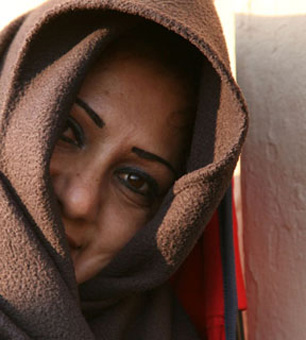 (Photos by David Bacon)David Bacon’s revealing photos can be seen in Berkley’s Addison Street windows through Dec. 15. The gallery, displayed in windows at 2018 Addison St., between Shattuck and Milvia, can be seen 24 hours a day.
(Photos by David Bacon)David Bacon’s revealing photos can be seen in Berkley’s Addison Street windows through Dec. 15. The gallery, displayed in windows at 2018 Addison St., between Shattuck and Milvia, can be seen 24 hours a day.
Hunger is faced by people in every neighborhood in our community, every day – young and old, working and unemployed. Today 16 percent of Californians struggle with how they’ll afford their next meal. Meanwhile Congress debates and passes bills that make massive cuts in nutrition programs.
These photographs document a social fact that many would rather not see – that people in this richest of all countries go hungry. But these photographs also document what we as a community can do to care for each other and ensure that everyone can eat, while we struggle for a society and world in which no one will go hungry.
This show is a cooperative project between documentary photographer David Bacon and the Alameda County Community Food Bank, shown with the support of the Civic Arts Program of the City of Berkeley, Greg Morozumi, curator.
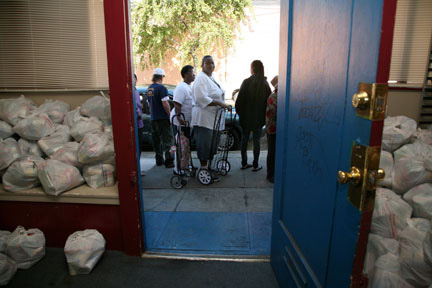
Cornerstone Baptist Church, Oakland
Families line up on the sidewalk outside a storefront where church members bag food, and then distribute to the hungry.
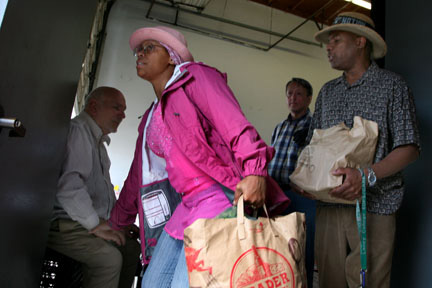
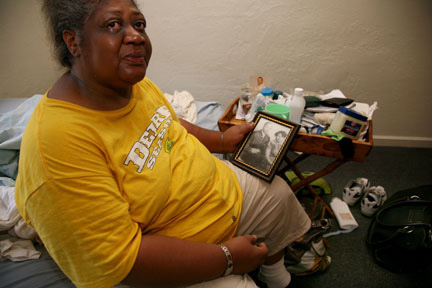
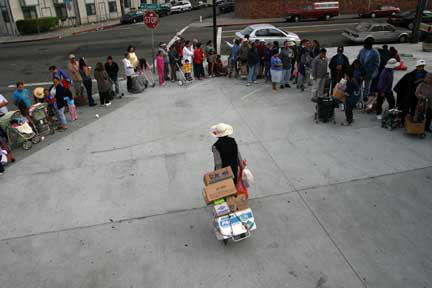
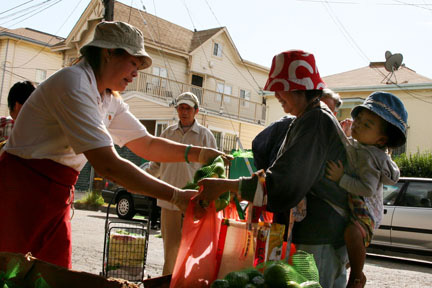
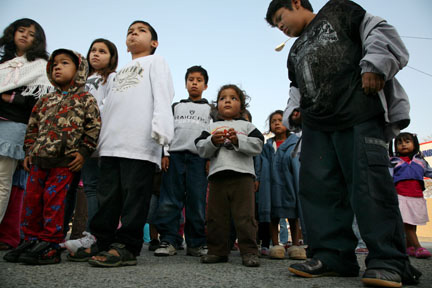

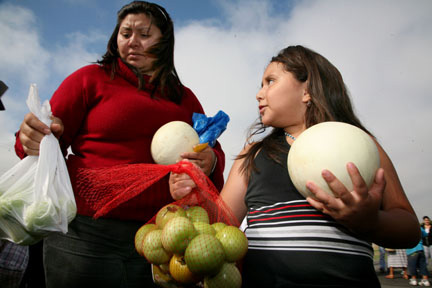
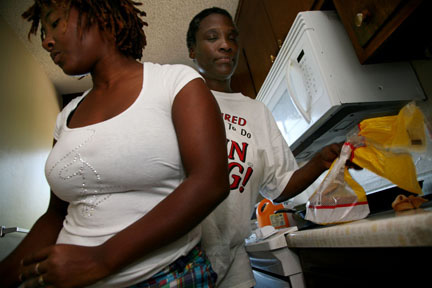
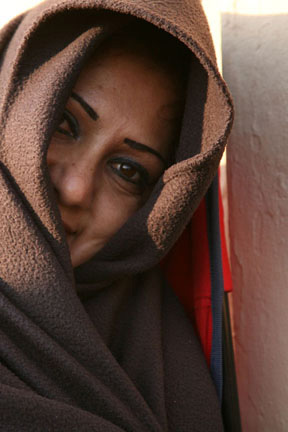
Some 16 percent of all families are food insecure – they don’t have the money to buy enough food at some point duirng the year. That amounts to 49 million people, including more than 16 million children, almost a quarter of all the children in the United States.
About a third of those families simply didn’t get enough food to eat – these families went hungry. That includes 12 million adults, and 5 million kids.
Hunger isn’t really spread evenly, as is obvious when you think about it. More in Oakland. Less in Lafayette. More than a quarter of all black and Latino households are food insecure – compared to 16 percent in general. And more than 13 percent of all families made up of single moms and their children are not just food insecure, but outright hungry.
Some 42.2 percent of food-insecure households have incomes below the official poverty line – $21,834 for a family of four. So more than half of all hungry families actually have incomes over the poverty line. Millions of families not officially “in poverty” still don’t have enough money to buy the food they need.
Breadwinners in hundreds of thousands of California families have lost their jobs. Families that formerly had no trouble feeding themselves, and even went out to eat in restaurants, can’t put enough food on the table at home at some point to keep everyone from getting up hungry.
So people go to food banks, food pantries and soup kitchens to try to make up for what they can no longer buy. Across the country, almost 5 million people went to food pantries last year. About 625,000 ate in soup kitchens.
Alameda County, with a population of 1.5 million, has probably a quarter of a million food insecure people. Contra Costa 160,000. Oakland 64,000. Berkeley and Richmond 16,000 each. Hayward more than 22,000 and Alameda more than 11,000. There are more than 20,000 hungry children in Oakland alone. Do the math for your own neighborhood or city.
Angry, shocked, overwhelmed? Take action: Support independent media.
We’ve borne witness to a chaotic first few months in Trump’s presidency.
Over the last months, each executive order has delivered shock and bewilderment — a core part of a strategy to make the right-wing turn feel inevitable and overwhelming. But, as organizer Sandra Avalos implored us to remember in Truthout last November, “Together, we are more powerful than Trump.”
Indeed, the Trump administration is pushing through executive orders, but — as we’ve reported at Truthout — many are in legal limbo and face court challenges from unions and civil rights groups. Efforts to quash anti-racist teaching and DEI programs are stalled by education faculty, staff, and students refusing to comply. And communities across the country are coming together to raise the alarm on ICE raids, inform neighbors of their civil rights, and protect each other in moving shows of solidarity.
It will be a long fight ahead. And as nonprofit movement media, Truthout plans to be there documenting and uplifting resistance.
As we undertake this life-sustaining work, we appeal for your support. We have 8 days left in our fundraiser: Please, if you find value in what we do, join our community of sustainers by making a monthly or one-time gift.